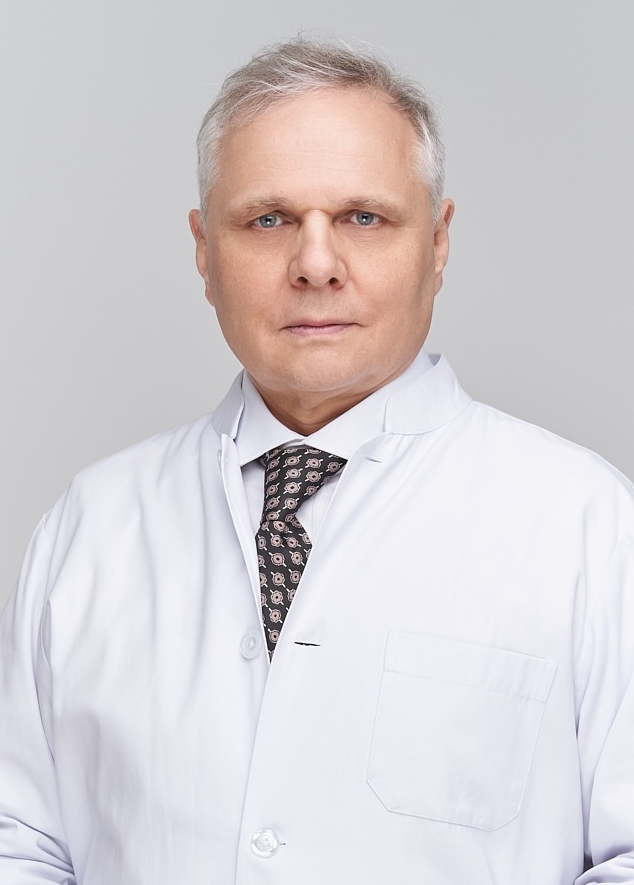
Post-Traumatic Stress Disorder (PTSD) is always the result of a specific and deeply distressing event, a trauma. One can directly experience this event, witness it, or encounter it in a professional role like an emergency helper.
In psychology, trauma is defined as a circumstance or event that induces profound fear, helplessness, or the experience of being subject to external forces.
A person exposed to trauma often has no way to cope emotionally. If the impact of a trauma becomes too large to handle, it can disrupt the individual’s sense of self, leading to PTSD.
Traumatic events can be sudden and brief, such as natural disasters or accidents (Type 1 trauma), or they can be prolonged and repetitive, such as long-term abuse, captivity, or war (Type 2 trauma).
The nature and duration of the trauma play a key role in determining the severity and persistence of PTSD symptoms.
For Treatment of PTSD Contact Our Specialist:
Call CHMCTypical Triggers of PTSD
Trauma can come in many forms. Common triggers include war, terrorism, civil unrest, or forced displacement. Individuals may also experience PTSD after personal violence such as rape, torture, sexual abuse, or kidnapping.
Serious accidents—whether in traffic, at work, or during leisure activities—can also lead to trauma. Frequent triggers of PTSD include natural disasters like earthquakes, floods, or fires, as well as human-made catastrophes such as industrial accidents, building collapses, or explosions. Even life-threatening health events like heart attacks or emergency treatments in intensive care units can act as traumatic stressors.
Risk and Protective Factors for PTSD
The likelihood of developing PTSD depends on several factors. These can occur before the trauma (pre-traumatic factors), during the trauma (peri-traumatic factors), or after the trauma (post-traumatic factors).
Pre-Traumatic Factors
Early life experiences shape how a person responds to trauma later in life. A lack of emotional support, frequent family conflicts, authoritarian parenting, or a poor quality of social contacts in childhood are all considered risk factors.
A family history of mental illness, previous traumatic experiences such as childhood abuse, or entering the trauma at a very young or advanced age can also heighten vulnerability. Preexisting mental health conditions, a diminished educational background, and a potential genetic predisposition also may exacerbate the risk.
On the other hand, protective factors such as emotional closeness to caregivers, stable social environments, and socioeconomic security can serve as buffers.
Peri-Traumatic Factors
The type of trauma itself can strongly affect whether PTSD develops. Long-lasting or severe trauma increases the likelihood of later psychological damage. Trauma caused by other people, such as violence or abuse, often has deeper emotional consequences than natural events like storms or floods.
If a person experiences dissociation during the event—such as feeling disconnected from their body or perceiving the world as unreal—the risk of PTSD rises.
The protective factors against the trauma are the sense of agency or hope during the trauma exposure. People who manage to hold on to personal control or emotional stability during traumatic events may cope better afterward.
Post-Traumatic Factors
PTSD is more likely to develop when additional stressors occur during the recovery phase, such as serious illness, divorce, or further traumatic events. Lack of emotional support from family or friends can also make it harder to process trauma. Avoiding reminders of the trauma or engaging in unhelpful thought patterns can keep symptoms alive.
Protective post-traumatic factors include strong social support, formal recognition of the victim’s experience, and the ability to make sense of what happened. Healthy coping strategies—like talking to others, seeking help when needed, and believing in one’s ability to overcome challenges—can improve resilience and reduce the risk of PTSD.
Psychological Models Explaining PTSD
Memory Processing Model
Research suggests that trauma can disrupt the functioning of the hippocampus, the brain area responsible for processing memory. Instead of being stored as coherent episodes, trauma memories may be fragmented into sensory-based pieces—images, sounds, or smells. This makes it difficult for the brain to integrate the trauma into normal memory, leading to flashbacks where only fragments of the memory re-emerge, often intensely and unexpectedly.
EMDR and Trauma Processing
The memories of the traumatic event are stored in a raw and unprocessed form because the brain was unable to integrate these memory fragments into its broader network of experiences. The specific bilateral stimulation used in EMDR helps the brain reprocess these old traumatic memories. As a result, maladaptive responses such as avoidance or overcompensation, which developed as a consequence of the trauma, can be resolved. The distressing memories gradually lose their intrusive and emotionally overwhelming nature. With continued EMDR treatment, these intrusive experiences fade, leaving behind tolerable and emotionally balanced memories of the event.
Neurobiological Changes
People with PTSD often show heightened activity in the body’s stress-response system. This constant state of stress can cause symptoms like hypervigilance, sleeplessness, and exaggerated startle responses.
Learning Theories
According to Mowrer’s two-factor theory, individuals learn to associate neutral stimuli with the trauma itself. For example, darkness or a specific smell may become linked to a traumatic event. To avoid the emotional distress, people may avoid similar situations. However, this avoidance behavior reinforces the fear and prevents emotional healing, keeping PTSD symptoms alive over time.
Two-Factor Model
Mowrer (1960) introduced the Two-Factor Model, suggesting that fear develops through classical conditioning and is sustained through operant conditioning. In this framework, fear arises when a neutral stimulus becomes associated with a frightening event (classical conditioning) and is then maintained because avoidance and escape behaviors are reinforced by the reduction of anxiety (operant conditioning). Later, McAllister (1995) and McGlynn (2002) proposed that Mowrer’s theory provides a useful explanation for the effectiveness of exposure therapy, as it directly targets and disrupts these learned fear and avoidance patterns.
Causes and Risk Factors of PTSD. Summary
Post-Traumatic Stress Disorder (PTSD) arises after experiencing or witnessing a deeply distressing or life-threatening event. Trauma can be sudden, like an accident or natural disaster, or prolonged, such as physical abuse or captivity.
The development of PTSD depends on multiple factors: early childhood experiences, the nature of the trauma, and the emotional support available afterward.
Neurobiological changes, fragmented memory processing, and learned avoidance behaviors also play roles in maintaining the disorder.
Although certain risks increase vulnerability, protective elements like strong social support and healthy coping strategies can significantly improve recovery and resilience.
FAQs about the Causes and Risk Factors of PTSD
What causes PTSD?
PTSD is caused by experiencing or witnessing a traumatic event that overwhelms a person’s ability to cope. This can include events like violence, natural disasters, serious accidents, war, or repeated abuse. During such moments, the brain and nervous system can become overwhelmed, leading to changes in how stress, emotions, and memory are processed.
Who is most at risk of developing PTSD?
Anyone can develop PTSD, but certain factors increase the risk. These include exposure to multiple or repeated traumas, a history of childhood abuse, lack of emotional support after the event, or an existing mental health condition. Individuals with family members who’ve had PTSD or depression may also be at higher risk due to genetic and environmental factors.
Can children develop PTSD?
Yes, children can develop PTSD. Traumatic experiences such as abuse, loss of a parent, violence, or accidents can deeply affect children and disrupt their emotional and psychological development. Early intervention and support from caregivers are key to reducing long-term effects.
What are examples of traumatic events that lead to PTSD?
Common traumatic events include serious car accidents, physical or sexual assault, natural disasters like earthquakes or flooding, war and conflict, sudden loss of a loved one, or medical trauma such as emergency surgeries or intensive care hospitalizations.
Is PTSD more likely after man-made or natural disasters?
PTSD is more likely to develop after trauma caused by humans, such as violence or assault, compared to natural disasters like earthquakes or storms. Trauma inflicted by another person often creates deeper feelings of fear, betrayal, and helplessness, which can make recovery more difficult.
Are some people protected against PTSD?
Yes, certain protective factors can lower the risk of PTSD. These include strong social support, a safe living environment, healthy coping strategies, and a sense of purpose or meaning. People who can talk about their trauma and seek help early are less likely to experience long-lasting symptoms.
Does everyone who experiences trauma get PTSD?
No, not everyone who goes through trauma develops PTSD. Many people experience stress reactions immediately after a traumatic event, but most gradually recover without long-term problems. The development of PTSD depends on multiple factors, including emotional support, mental health history, and biological responses.
Can someone develop PTSD years after the trauma?
Yes, it is possible for PTSD symptoms to appear months or even years after the trauma. This delayed reaction often occurs when stress builds up or when a person is reminded of the traumatic event later in life through triggers or life changes.
How does the brain change during PTSD?
Research shows that PTSD can alter brain functions, especially in areas that regulate memory and emotional responses, such as the hippocampus and amygdala. This can cause fragmented memories, heightened anxiety, and an exaggerated fear response.
What role does avoidance play in PTSD?
Avoidance is a common coping behavior in PTSD where the person tries to stay away from reminders of the trauma. Although this may reduce anxiety in the short term, it keeps the trauma memory unprocessed, which can prolong or worsen symptoms.


